Anxiety. We’ve all experienced it from one time or another but for some (me included) it’s an unwanted factor of daily life.
While anxiety certainly has its place in the human experience it shouldn’t become an over-ruling element that affects your day-to-day life and your enjoyment thereof.
There’s plenty of ways to combat anxiety, but I do just want to preface this article by saying that if you feel your anxiety is out of control, prevents you from leaving the house, interacting with others, or you feel it’s becoming steadily worse do reach out to a healthcare professional.
Sometimes, myself included, a combination of medication, therapy, and self-care techniques such as visualization is needed to overcome severe anxiety.
Without any further ado, however, in this article, we’ll be exploring 7 different visualization techniques to reduce your anxiety levels and to help calm yourself.
What is Anxiety?
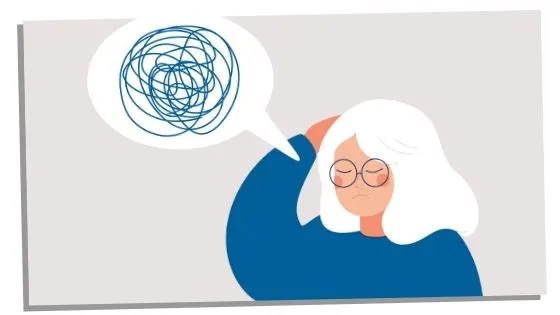
Before we delve into how to tackle anxiety we first need to know the nature of the beast.
Anxiety is a survival instinct we’ve had instilled in us from way back in our caveman days.
Anxiety is meant to keep us safe by putting us on high alert and making us hyper-vigilant to our surroundings.
However, aside from in survival and disaster situations, in modern life, there’s little place for anxiety, but that doesn’t mean we don’t still feel it, and for some, this anxiety response can go into overdrive and become completely debilitating.
When we experience times of anxiety our body releases the hormones adrenaline and cortisol, this was life-saving in prehistory times as it allowed us to act more quickly and boost energy for a quick escape, for example.
However, when the body releases these hormones unnecessarily we instead feel:
- Hyperaware
- Heart palpitations
- Shortness of breath
- Exhaustion without the ability to sleep
- Headaches
- Dizziness
- Sweating
- Paranoia
- Sense of dread
- Negative thought patterns
- Lack of motivation
As you can see with a combination of just a couple of entries on this list you’re in for a bad and/or scary time, but many people with anxiety conditions experience almost all of these on a day-to-day basis.
Why Should We Care About Our Anxiety Levels?
So, you may be reading this and only experience anxiety once every now and again or when exposed to specific stimuli such as the nerves faced before a flight or when seeing a spider.
So, why should you care about your anxiety levels?
Firstly, from small acorns, great oaks grow.
Frequent traumatic exposure to stimuli or sudden unexpected trauma (such as severe turbulence on the flight you were nervous about) can cause your anxiety levels to go into overdrive.
You may be left with a constant feeling of dread for some time which your brain might apply to other unrelated instances and add that to your collection of ‘anxiety triggers’. When these triggers become irrational or out of control you have a problem.
Even if your anxiety isn’t in the extreme, frequent low-level anxiety still leads to a steady release of the stress hormone cortisol and the ‘action’ hormone adrenaline.
These can result in the following side effects:
- Panic attacks
- Difficulty relaxing
- Depression
- Headaches
- Irritability
- Lowered immune system
- Breathing difficulties
- Heart concerns
- Upset stomach/IBS
- Loss of libido
- Fatigue
- High blood pressure
- Muscle and joint pain
So as you can see it’s much better for our health if we can tackle anxiety head-on before things become more severe!
How Visualization Helps Anxiety
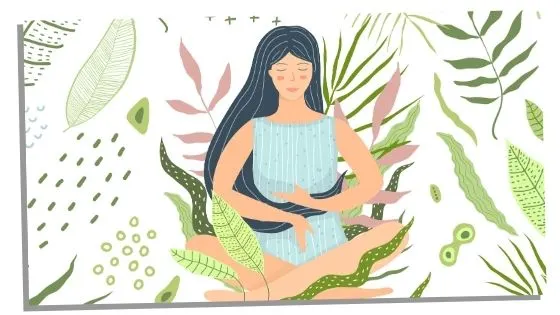
First of all, what is visualization?
Visualization can be quite a powerful technique when used correctly and can stop anxiety cycles in their tracks as well as decrease stress levels. At its core visualization is a distraction technique that forces your mind to focus on soothing mental imagery instead of the stresses or fears of the present.
This gives your body; which experiences much of the more noticeable effects of anxiety, time to recover, and calm allowing your calmed mind to return to a centered body.
Visualization And Anxiety: A Word Of Warning
Using your imagination to conquer anxiety can be a brilliant thing, but you need to understand that imagination can work both ways.
Remember when you were a kid and saw your dressing gown on the door and thought it was a ghost or monster?
While some kids may then be able to rationalize that no, this is in fact just a dressing gown, other more sensitive children will let their minds run wild and will continue to inflate their fears until they’re in a state of distress.
The same can be said when it comes to visualization.
When you use visualization activities you have to be prepared for unwanted interventions from your subconscious (this is why I find meditation stressful!) and need to work towards steering your visualizations back to a positive space.
This takes practice so you need to be aware of this when starting your visualization journey.
Visualization Hacks For Beginners

I have three top tips when it comes to successful visualization; practice, using the 5 senses, and interception. Let’s take a closer look at these:
Practice
I’ve already mentioned practice makes perfect, but why is that?
Well, think about a pro-athlete, when they’re asked what they were thinking at their moment of victory most cannot answer because their bodies were acting on instinct.
This comes from months and years of practice developing what is known as ‘muscle memory’. It’s muscle memory that allows some of us to text or type without looking at the keyboard or to instantly know when the pause button is on the remote, and you can do the same when it comes to visualization.
At first, visualization will feel unnatural and you’ll find yourself thinking more about how to visualize or the act of visualizing instead of letting the imagery naturally fill your mind.
Over time and with practice you can start to make this process become second nature allowing you to slip into your visualization space within a few moments.
Use The 5 Senses
When people first start visualizing they focus too much on the visual; which is strange since it’s in the name!
But strong visualization comes from picturing a scenario in your mind using all 5 senses. By methodically paying attention to what you can see, smell, hear, taste, and touch, you create a far stronger vision and will find it much more likely to be able to immerse yourself into your imaginary world.
Interception
As I hinted to earlier your intrusive thoughts will likely enter your visualization space from time to time; we’re not Jedi mind-masters after all!
The knack isn’t trying to avoid these intrusions from happening but instead, know how to intercept them before they can take control of your visions.
There are so many different ways this can be done, some people like to change up the scene entirely while others like to alter something within their visualization.
For example, if you’re picturing walking down a scenic pathway you may choose to take the path in another direction leaving the intrusion behind you.
Preparing Yourself To Visualize To Reduce Anxiety
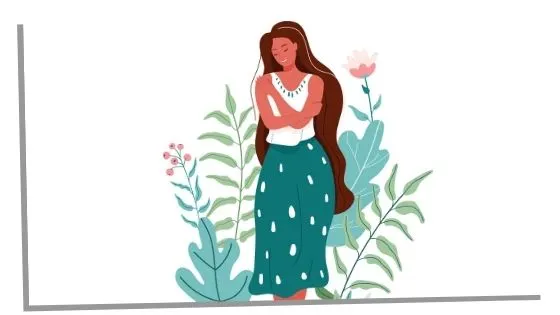
While when you’ve got the knack of visualization you can practice on the spot techniques to lower your anxiety when you first try you’ll need to make an effort to set the scene to increase your chances of successfully immersing yourself.
To keep things simple I’ve broken the preparation process down into some easy steps:
Step 1: Find A Safe Place To Visualize
Firstly think about a place that has made you feel happy, peaceful, or safe in the past.
This can be a location you discovered when on holiday, your favorite vista, a location from childhood, or even your own imaginary world.
Whatever you choose, make sure you’ll be happy ‘going there’ time after time as changing your safe space can be a hassle that is much easier to avoid.
Step 2: Find Your Safe Space
When you live with anxiety safe spaces are very important.
These are spaces where we mostly feel at ease and our anxiety tends to be lessened.
More often than not this is our own home, but sometimes it can be a place in nature or even the home of a loved one. Ideally, you want your safe space to be somewhere with minimal distractions, somewhere quiet, comfortable, and warm.
Step 3: Begin To Immerse Yourself
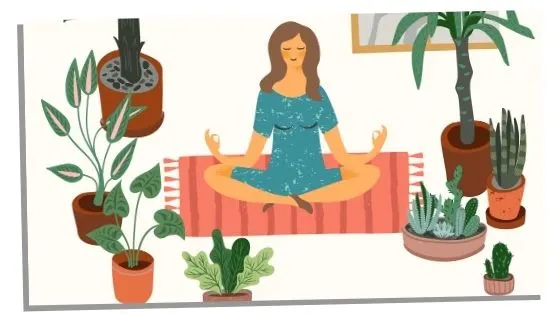
Now you’re in your safe space, close your eyes and start to imagine your chosen safe place.
If you feel too anxious to close your eyes that’s okay, you could try looking at a photo or an object that reminds you of your safe place instead.
Work systematically through the five senses, what can you see, hear, smell, taste, and touch?
It’s natural to struggle with this process which is why I recommend slipping into the ‘Savasana state’.
This is really just a posh term for getting yourself super relaxed and is achieved by regulating your breathing.
Start taking deep breaths in through your nose and out through your mouth. If you find your anxiety rising and your breathing starting to quicken then take it a little slower and start ‘box breathing’.
This is a popular anti-anxiety technique where you breathe in for 3 seconds, hold for 3 seconds, and breath out for 3 seconds.
This method is also a lot better for those of us who suffer from congestion as breathing through the nose can be a challenge!
There’s no right and wrong in the Savasana state, so just take your time, and when you start to feel more relaxed and in control, try returning to your visualization activity.
Step 4: Rid Yourself Of The Anxiety
You’ll probably find that some of your anxieties try to intrude your safe space, this may concern you at first but it’s actually to your advantage as it provides you with the opportunity to ‘cleanse’ yourself of your worries using your visualization.
This is a more advanced visualization technique so in your first visualization attempts you’ll probably want to turn your attention towards staying present in your safe place.
When intrusive thoughts invade your space use your power to turn them into objects or to steer your environment away from them (see path example from earlier).
For example, if you’re imagining a beach and your anxiety breaks through your safe place you could crush the anxiety down into some pebbles and start skipping stones with them thus metaphorically ridding yourself of their potentially debilitating power.
7 Visualization Technique For Anxiety To Bring You Into Relaxation

There are far more than 7 different visualization techniques, but what I’ve tried to do here is combine some of the most popular, with some of my personal favorites, as well as one or two you might not have heard of before.
1. The Tranquil Beach
When thinking of a relaxing space many of us picture the calm of the beach.
As a beach is a relatively simple space that we’re all familiar with; sand, sea, sky, it’s a perfect entry-level image to picture.
A beach setting can also be intricate too, meaning there’s the flexibility to weave your own narrative in this more generic space.
To use this technique, picture yourself laying on a sandy beach with the warm sun, blue skies, and the rhythmic lapping on the waves.
Imagine how the sand feels beneath you, how it shifts to support your weight, and the warmth it has from the sun. Imagine how the sand is suspending you, and hone your breathing to the lapping waves, let the sun's warmth spread through your body starting from your chest and out to your fingertips and toes.
Slipping this far into the tranquil beach may be enough to center yourself but you may want to delve even deeper and explore your surroundings further.
2. The Blender
Now, you may see the title of this and think; ‘how can a blender possibly be relaxing?’. Well, this visualization technique should only be used in certain circumstances, namely when you’ve got a lot of work on your plate or feel like your head is too cluttered and crowded.
If you feel uncomfortable visualizing a blender you could visualize a crusher or even a crackling fire instead.
Visualize your chosen destructive device switching on.
Fill the blender with all the things that are stressing you, or with items that symbolize the many tasks you need to get done. When the blender starts to blitz the demands of your life let go of the feelings of stress and anxiety that surround each item.
Keep the blender working until all your worries have been blended into nothingness.
Return to the here and now and you’ll likely feel as though a weight has been lifted off your shoulders and that you’re focussed and ready to tackle your to-do list. Having an affirmation in mind (such as ‘I can do this’ or ‘I’m taking things one step at a time’) can be an additional string to your proverbial bow post-visualization.
3. Color Breathing

Color breathing is probably a visualization exercise that you’ve probably never heard of but it’s actually one of my favorites and is perfect for creative individuals and those who enjoy visualizing the abstract over the material.
Color breathing is often used in conjunction with meditation exercises but can also be used by itself.
Color breathing involves practicing box breathing while visualizing a color.
The color pictured depends on the needs of the person and maybe pictured as a colored mist or energy or a series of objects which are the chosen color.
The different colors you can use are:
- Blue: For relaxation and peace
- Green: For healing and cleansing
- Magenta: For release
- Orange: For happiness and joy
- Red: For energy
- Turquoise: For calming and soothing
- Violet: For self-love and self-respect
- Yellow: For concentration and objective thinking
4. Chakra Balancing
Chakra balancing is a highly relaxing and meditative practice which I’ve discussed in-depth here.
We can often feel anxious or unsettled because our chakras are unbalanced, so why not reset your body and your mind at the same time by incorporating visualization with your balancing exercise.
You can choose any visualization technique from this list but personally, I think color breathing works great with chakra balancing because you can visualize each of the colors of the chakra points of your body as you let the crystals do their healing work.
This type of visualization is great for those with packed schedules as you’re merging two spiritual activities into one exercise.
It’s also ideal for those with a more spiritual side as it includes crystal work.
5. Visualization Box
This idea is similar to a manifestation box which I’ve written about recently.
You can check the manifestation box article here.
This visualization technique is a bit outside the box (pun intended) as it does not require you to seat yourself solely within your mind and is great for those with active imaginations who need to stay tethered to reality.
It is also great for creative and tactile people as it partly brings your visualization technique into the real world.
To get started with this technique you’ll still need to think of somewhere safe, however, this doesn’t have to be a static place and can instead be a memory.
Find a box (this can be as simple as a shoebox or can be decorative) and fill the box with objects and pictures which remind you of said place or memory. If we return to the beach example you could include some pebbles, a bag of sand, some shells, photographs of the beach, and so on.
As you start to relax and bring your safe space to the forefront of your mind, start working your way through the box exploring the items within with all your senses.
Work methodically through the box using the items to enhance the mental image of your safe space and the handling of the items to distract your body from any anxious feelings.
This activity can also be a great visualization first-step as it can get you used to the process and comfortable with it before you move on to solely picturing things in your mind.
6. The Blue Light

Similar to color breathing visualizing calming lights can be simple and effective for quick grounding and anxiety reduction.
Visualizing blue light is considered best as blue is a naturally calming color, but if you’re like me and experience depression too, you might want to consider a color you personally view as calming or happy; for me this is yellow.
Firstly picture yourself surrounded by a glowing ball of light, as you breathe in let the light enter your body and fill up your mind.
As you breathe out, picture the light-capturing your worries and anxieties and exiting your body as you exhale. Picture the light that leaves you as black, and keep repeating the breathing process until the light you breathe out is clear blue.
7. Stop Sign
I often think of my anxiety like a snowball falling down a mountainside.
It starts small but as it rolls faster and faster it picks up more and more snow getting bigger and bigger until it becomes an avalanche.
Spiralling is a natural part of anxiety but you shouldn’t allow your fears to spin themselves out of control. This is where the stop sign visualization technique comes in. This creates a dead-end for your spiraling fears preventing them from going any further.
A great thing about the stop sign technique is that it’s a split-second visualization which can be done on the go as many times as you need to throughout your day.
Whenever you have an intrusive thought or feel your anxiety start to spike or spiral picture a big stop sign.
Alternatively, you could picture a brick wall or a forcefield between you and the thoughts which the thoughts are not able to penetrate.
Focus on your chosen barricade and repeat the word stop (out loud or in your head) until you feel more in control.
Final Thoughts
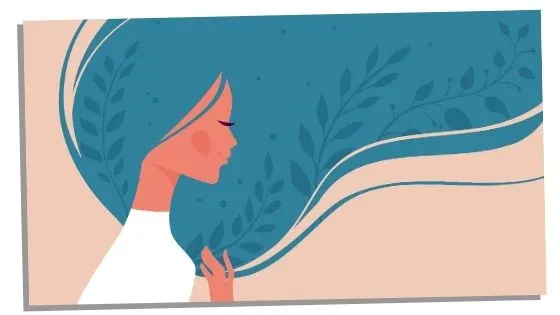
Visualization techniques are great because they put the power back in your hands.
You are the master and creator of your mind and you have the final say of what happens within it; visualizing techniques simply remind you of this fact.
One of the best things about visualization techniques is that they can be changed and customized to suit you, there’s no one-size-fits-all method and therefore you shouldn’t feel any pressure for a particular method to ‘work’ for you.
Instead, listen to who you are as a person and have fun imagining your own creation.
Let this list guide you and come up with your own supercharged visualization techniques that show your anxiety who’s boss!
I’m Chloe, an introverted, old soul, just trying to make my way in the world! Aside from studying and writing about the spiritual, I fill my spare time with reading and making all manner of things from knitted scarves to clay creations. I define myself as a ‘low-key Pagan’ and focus my attention on living a good, kind, and empathic life. For enquiries contact me at: [email protected]


